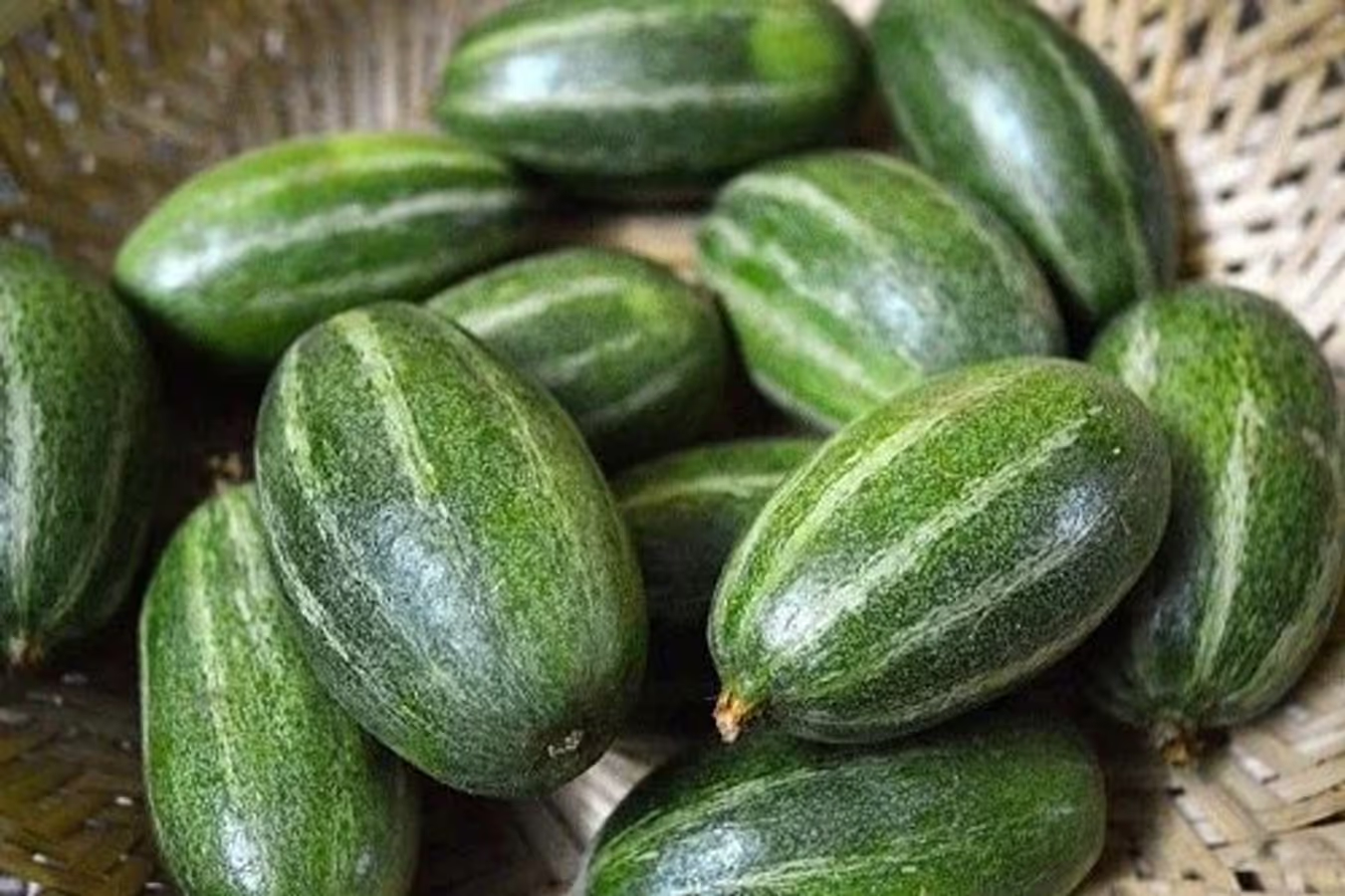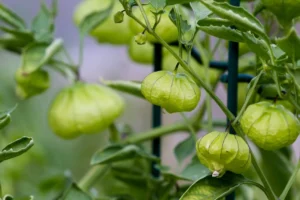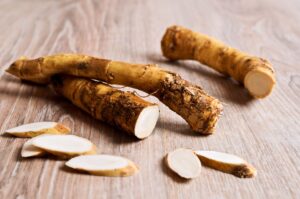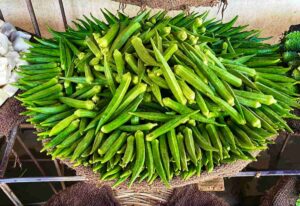How to Grow and Use Culinary Pointed Gourd: A Complete Guide
Are you looking to add a unique and nutritious vegetable to your home garden? Pointed gourd (Trichosanthes dioica), also known as parwal or potol, is gaining popularity in the US for its versatility in cooking and impressive health benefits. This comprehensive guide will walk you through everything you need to know about growing pointed gourd successfully in your home, garden, or indoors—even if you’re a beginner.
What is Pointed Gourd?
Pointed gourd is a perennial vine from the Cucurbitaceae family (the same as cucumbers and melons). Native to South Asia, this tropical vegetable is now making its way into American gardens and kitchens. With its emerald green, torpedo-shaped fruits and impressive nutritional profile, pointed gourd is becoming a sought-after crop among health-conscious gardeners.
According to the USDA Agricultural Research Service, pointed gourd is rich in vitamins A and C, contains essential minerals, and is low in calories, making it an excellent addition to a healthy diet. Source: USDA National Agricultural Library.
Growing Conditions for Pointed Gourd in the US
Before diving into cultivation methods, it’s important to understand the growing requirements for pointed gourd in the US climate.
| Growing Factor | Requirement | Notes for US Growers |
|---|---|---|
| USDA Hardiness Zones | 8-11 | Can be grown in zones 5-7 with protection |
| Temperature | 75-90°F (24-32°C) | Needs protection below 50°F (10°C) |
| Sunlight | Full sun (6-8 hours daily) | Partial shade in extremely hot climates |
| Soil pH | 6.0-6.8 | Slightly acidic to neutral |
| Growing Season | Spring through Fall | Start indoors 6-8 weeks before last frost |
| Time to Harvest | 70-90 days | From transplanting |
| Water Needs | Moderate, consistent | 1-1.5 inches per week |
| Support Structure | Required | Trellis or vertical support system |
How to Grow Pointed Gourd from Seeds
Growing pointed gourd from seeds requires a bit of patience, but the results are worth it. Here’s your step-by-step guide:
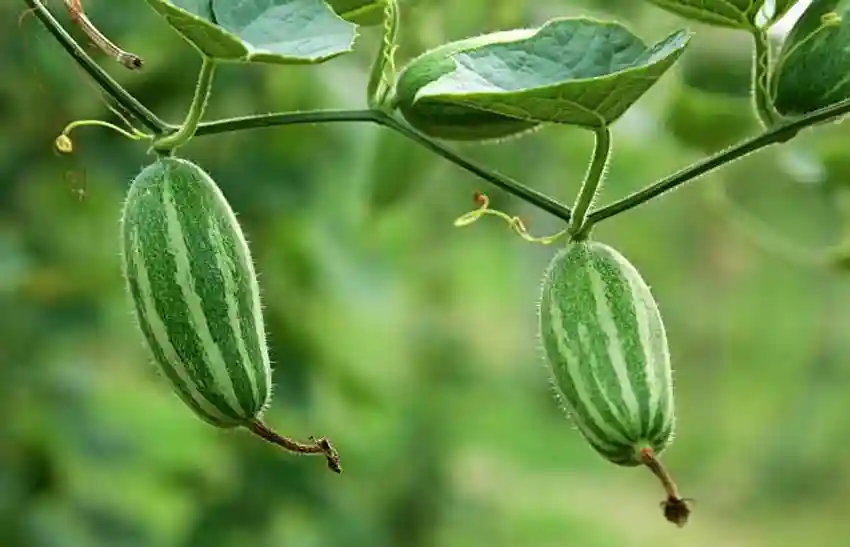
Seed Preparation
- Source quality seeds: Purchase from reputable suppliers specializing in Asian vegetables or through specialty online retailers. The US National Plant Germplasm System occasionally offers pointed gourd seeds for research and cultivation.
- Seed treatment: Soak seeds in warm water for 24-48 hours before planting to improve germination rates.
- Scarification: Gently nick the seed coat with a file or sandpaper to help with germination, as pointed gourd seeds have hard outer shells.
Starting Seeds Indoors
For most US climate zones, starting seeds indoors is recommended:
- Timing: Begin 6-8 weeks before your area’s last expected frost date.
- Growing medium: Use a sterile seed-starting mix with good drainage.
- Planting depth: Plant seeds 1/2 inch deep in individual biodegradable pots (3-4 inch diameter).
- Temperature: Maintain soil temperature at 75-85°F (24-29°C) for optimal germination. Use a heat mat if necessary.
- Moisture: Keep soil consistently moist but not waterlogged. Cover with plastic wrap to create a mini-greenhouse effect.
- Germination: Expect seeds to sprout in 10-14 days. Remove plastic cover once seedlings emerge.
- Light: Once germinated, provide 14-16 hours of light daily using grow lights or a sunny windowsill.
Transplanting Pointed Gourd Seedlings
When your seedlings have developed 2-3 true leaves and all danger of frost has passed:
- Hardening off: Acclimatize seedlings by gradually exposing them to outdoor conditions over 7-10 days.
- Soil preparation: Enrich garden soil with compost or well-rotted manure. Ensure excellent drainage.
- Spacing: Plant seedlings 3-4 feet apart in rows spaced 6 feet apart to accommodate vining growth.
- Support structure: Install trellises, fences, or other vertical supports at planting time to prevent root disturbance later.
- Transplant depth: Plant at the same depth as in the container to prevent stem rot issues.
Growing Pointed Gourd in Containers
Don’t have garden space? No problem! Pointed gourd adapts well to container growing:
Container Selection and Setup
- Pot size: Choose containers at least 12-15 inches deep and 15-18 inches in diameter.
- Growing medium: Use a high-quality potting mix amended with compost (2:1 ratio).
- Drainage: Ensure containers have adequate drainage holes.
- Support: Place a trellis or vertical support in or beside the container at planting time.
Container Care Tips
- Watering: Check moisture levels daily, as containers dry out faster than garden soil. Water when the top inch feels dry.
- Feeding: Apply liquid organic fertilizer every 2-3 weeks during the growing season.
- Location: Position containers where they receive at least 6 hours of direct sunlight daily.
- Winter care: In zones 7 and below, move containers to protected areas or indoors during winter months.
Growing Pointed Gourd Indoors
With the right setup, you can grow pointed gourd indoors year-round:
Indoor Growing Requirements
- Light: Provide 12-14 hours of strong light daily using full-spectrum LED grow lights positioned 12-18 inches above plants.
- Temperature: Maintain room temperature between 70-85°F (21-29°C).
- Humidity: Aim for 50-70% humidity. Use a humidifier or pebble tray with water if needed.
- Pollination: As a dioecious plant (separate male and female plants), you’ll need to hand-pollinate when growing indoors. Use a small paintbrush to transfer pollen from male to female flowers.
- Air circulation: Use a small fan to provide gentle air movement, strengthening stems and reducing disease risk.
Ongoing Care for Pointed Gourd Plants

Watering and Fertilization
- Watering schedule: Provide 1-1.5 inches of water weekly, adjusting for rainfall and temperature.
- Irrigation method: Use drip irrigation or soaker hoses to keep foliage dry and prevent fungal issues.
- Fertilization: Apply balanced organic fertilizer (10-10-10) once monthly during the growing season.
- Mulching: Apply 2-3 inches of organic mulch to retain moisture and suppress weeds.
Training and Pruning
- Training: Guide young vines onto supports weekly to prevent tangling.
- Pruning: Remove lateral branches from the first 1-2 feet of the main stem to promote air circulation.
- Maintenance pruning: Trim overly vigorous growth and remove damaged or diseased foliage promptly.
Common Pests and Diseases in the US
Growing pointed gourd in the US presents unique challenges. Here are common issues and solutions:
Pest Management
- Cucumber beetles: Use floating row covers early in the season and apply neem oil as needed.
- Aphids: Spray with strong water jets or insecticidal soap solution.
- Spider mites: Increase humidity and treat with horticultural oils.
Disease Prevention
- Powdery mildew: Ensure adequate spacing and air circulation; apply sulfur-based fungicides if necessary.
- Vine borers: Common in the eastern US—wrap stems with aluminum foil at soil level and monitor for entry holes.
- Root rot: Avoid overwatering and ensure excellent drainage.
Harvesting and Using Your Pointed Gourd
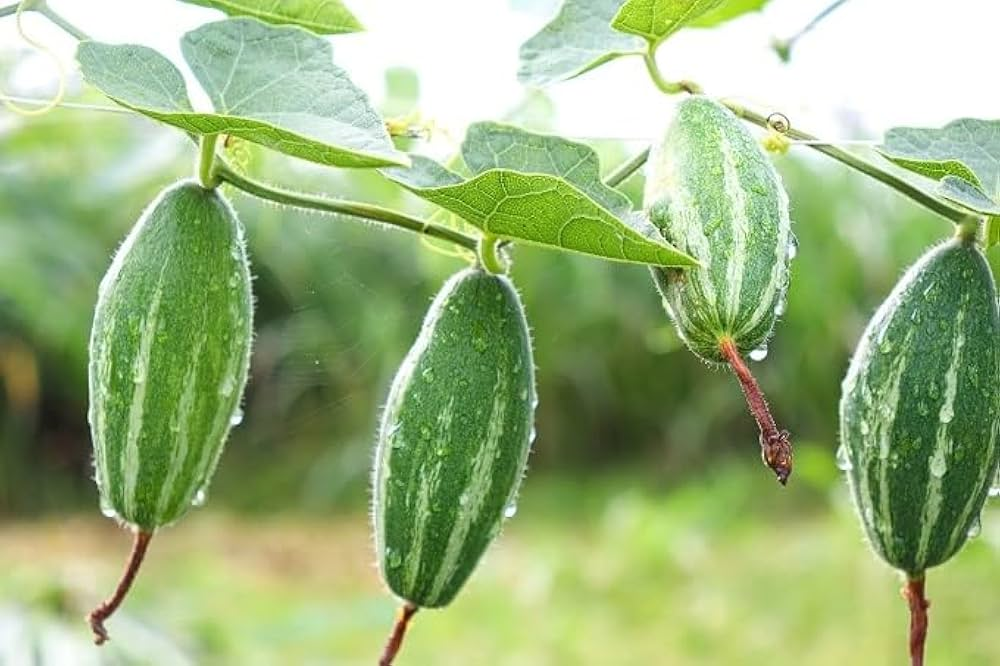
When and How to Harvest
- Timing: Harvest fruits when they’re 3-5 inches long, still tender, with glossy green skin (typically 70-90 days after transplanting).
- Method: Cut fruits with pruning shears leaving a small portion of stem attached.
- Frequency: Harvest every 2-3 days during peak season to encourage continuous production.
Storage and Preservation
- Short-term storage: Keep unwashed fruits in the refrigerator’s crisper drawer for up to 1 week.
- Long-term preservation: Blanch and freeze, pickle, or dehydrate for extended storage.
Culinary Uses of Pointed Gourd
Pointed gourd is incredibly versatile in the kitchen:
- Preparation: Scrub the skin clean, trim ends, and slice as desired. Young gourds can be used with skin; mature ones may need peeling.
- Cooking methods: Stir-fry, steam, roast, stuff, or add to curries and soups.
- Flavor profile: Mild, similar to cucumber when young, becoming more squash-like when mature.
- Nutritional benefits: Rich in vitamins A and C, fiber, and antioxidants while being low in calories. According to the CDC’s Nutrition Division, incorporating diverse vegetables like pointed gourd can help meet dietary recommendations for Americans. Source: CDC State Indicator Report on Fruits and Vegetables.
Growing Pointed Gourd as a Business Opportunity
With the growing popularity of international cuisines and increased interest in diverse vegetables, pointed gourd presents a unique market opportunity in the US:
- Target markets: Asian grocery stores, farmers markets, CSA programs, and direct-to-restaurant sales.
- Market advantage: Still relatively uncommon in US markets, allowing for premium pricing.
- Scale considerations: Start small to master growing techniques before expanding.
- Regulations: Check with your state’s Department of Agriculture regarding any regulations for growing and selling this crop commercially.
Conclusion
Growing pointed gourd in the US may require some additional care compared to more common garden vegetables, but the unique culinary opportunities and health benefits make it well worth the effort. Whether you’re growing in a spacious garden, in containers on a patio, or indoors under lights, these guidelines will help you successfully cultivate this versatile vegetable.
By following the detailed instructions in this guide, you’ll be harvesting your own pointed gourds in no time. Start your growing journey today and enjoy the satisfaction of adding this nutritious and unusual vegetable to your homegrown produce collection!
Are you growing pointed gourd or planning to start? What other unique vegetables are you cultivating in your garden? Share your experiences and questions in the comments below!
